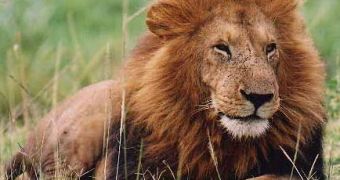This week's issue of the journal Biodiversity and Conservation witnessed the publication of a new study stating that, throughout the past 50 years, Africa lost roughly 75% of its savannas.
To make matters even worse, about two thirds of the continent's lion population went along for the ride, meaning that this species of big cats experienced a harsh drop in its overall headcount.
This particular study concerning the impact of human society on Africa's biodiversity was led by researchers working with the Duke University.
According to their estimates, it was only in 1960 that Africa was home to roughly 100,000 lions. However, only 32,000 such felines are now left to inhabit this part of the world.
Lead author Jason Riggio wished to draw attention to the fact that, up until now, it was still unclear just how many of Africa's natural ecosystems had been destroyed by the expansion of human society.
This was because the low-resolution satellite imagery used thus far failed to identify and pin down all of the human settlements established in Africa's woodlands.
However, “Using very high-resolution imagery we could tell that many of these areas are riddled with small fields and extensive, if small, human settlements that make it impossible for lions to survive,” Jason Riggio argues.
Besides high-resolution imagery, these researchers also resorted to fieldwork and took into consideration several other studies concerning human population density and local lion populations. Therefore, their findings are bound to be quite accurate.
Stuart Prim, presently employed as a Professor of Conservation Ecology at Duke's Nicholas School of the Environment, made a case of how, “The word savanna conjures up visions of vast open plains teeming with wildlife. But the reality is that massive land-use change and deforestation, driven by rapid human population growth, has fragmented or degraded much of the original savanna.”
“Only 25 percent remains of an ecosystem that once was a third larger than the continental United States,” he went on to add.
The financial support for this study was provided by National Geographic's Big Cats Initiative, a green-oriented campaign meant to safeguard big cats worldwide.

 14 DAY TRIAL //
14 DAY TRIAL //